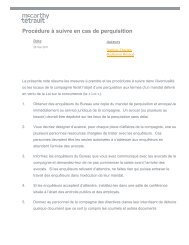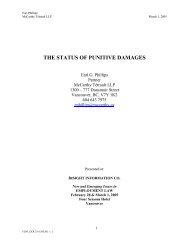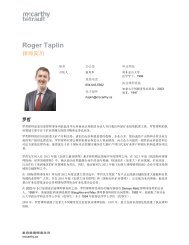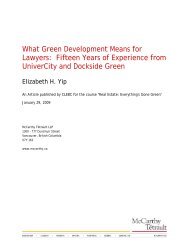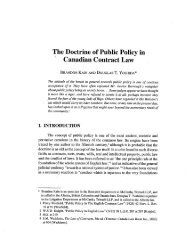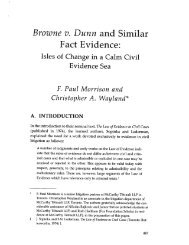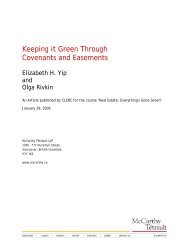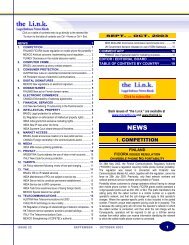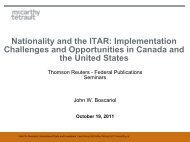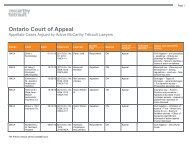Presentation Material - McCarthy Tétrault
Presentation Material - McCarthy Tétrault
Presentation Material - McCarthy Tétrault
Create successful ePaper yourself
Turn your PDF publications into a flip-book with our unique Google optimized e-Paper software.
Chris Falk<br />
Stefanie Morand<br />
<strong>McCarthy</strong> Tétrault LLP<br />
could have applied the Losses to offset the capital gain. If the taxpayer then wound-up Canco<br />
so as to access the value of the underlying assets, he would have been deemed to have<br />
received a dividend equal to the amount by which the FMV of the property distributed on the<br />
winding-up exceeded $101 (i.e., the PUC of the shares). This deemed dividend would have<br />
been subject to Part XIII withholding tax. While the wind-up would have resulted in a capital<br />
loss to the taxpayer, subsection 40(3.7) would have applied to deny the loss to the extent of the<br />
deemed dividend. 43<br />
If, after having emigrated from Canada, the taxpayer instead transferred the shares of Canco to<br />
a Canadian corporation with which he did not deal at arm’s length in exchange for a promissory<br />
note equal to the FMV of the shares, subsection 212.1(1) would have applied to deem the<br />
taxpayer to have received a dividend equal to the amount by which the promissory note<br />
exceeded $101 (i.e., the PUC of the shares). Again, this deemed dividend would have been<br />
subject to Part XIII withholding tax.<br />
If, prior to emigrating from Canada, the taxpayer by-passed Brother and simply transferred the<br />
shares to Holdco in exchange for a promissory note, section 84.1 would have deemed the<br />
taxpayer to have received a dividend equal to the amount by which the promissory note<br />
exceeded $101 (i.e., the PUC and ACB of the shares).<br />
If the taxpayer wound-up Canco prior to emigrating from Canada, subsection 84(2) would have<br />
deemed the taxpayer to have received a dividend equal to the amount by which the FMV of the<br />
property distributed on the winding-up exceeded $101 (i.e., the PUC of the shares).<br />
Accordingly, in each alternative (other than a third-party sale which was not available), the<br />
taxpayer would have been deemed to have received a dividend taxable under either Part I or<br />
Part XIII of the Act.<br />
The Decision – Subsection 84(2)<br />
The first issue considered by Mr. Justice Hershfield was whether subsection 84(2) applied to recharacterize<br />
as a dividend the amount received by the taxpayer for the Canco shares.<br />
As summarised by Mr. Justice Hershfield, the Crown advanced three arguments in support of its<br />
position that subsection 84(2) applied in the circumstances. Specifically, the Crown relied on:<br />
• the phrase “in any manner whatever” in the preamble of subsection 84(2);<br />
• the Tax Court of Canada’s earlier decision in RMM; and<br />
• a “purposive rather than literal construction of the subject provision”. 44<br />
Each of these arguments was rejected by Mr. Justice Hershfield.<br />
43<br />
44<br />
Provided the shares were still taxable Canadian property at the time of the wind-up, section 119 would have<br />
applied to permit a credit of Part XIII withholding tax paid in respect of the winding-up dividend against the tax, if<br />
any, payable by the taxpayer on the capital gain that arose on the deemed disposition of the shares on<br />
emigration.<br />
Supra, note 5, at para. 47.<br />
560600/422632<br />
MT DOCS 11864055v1G<br />
14



